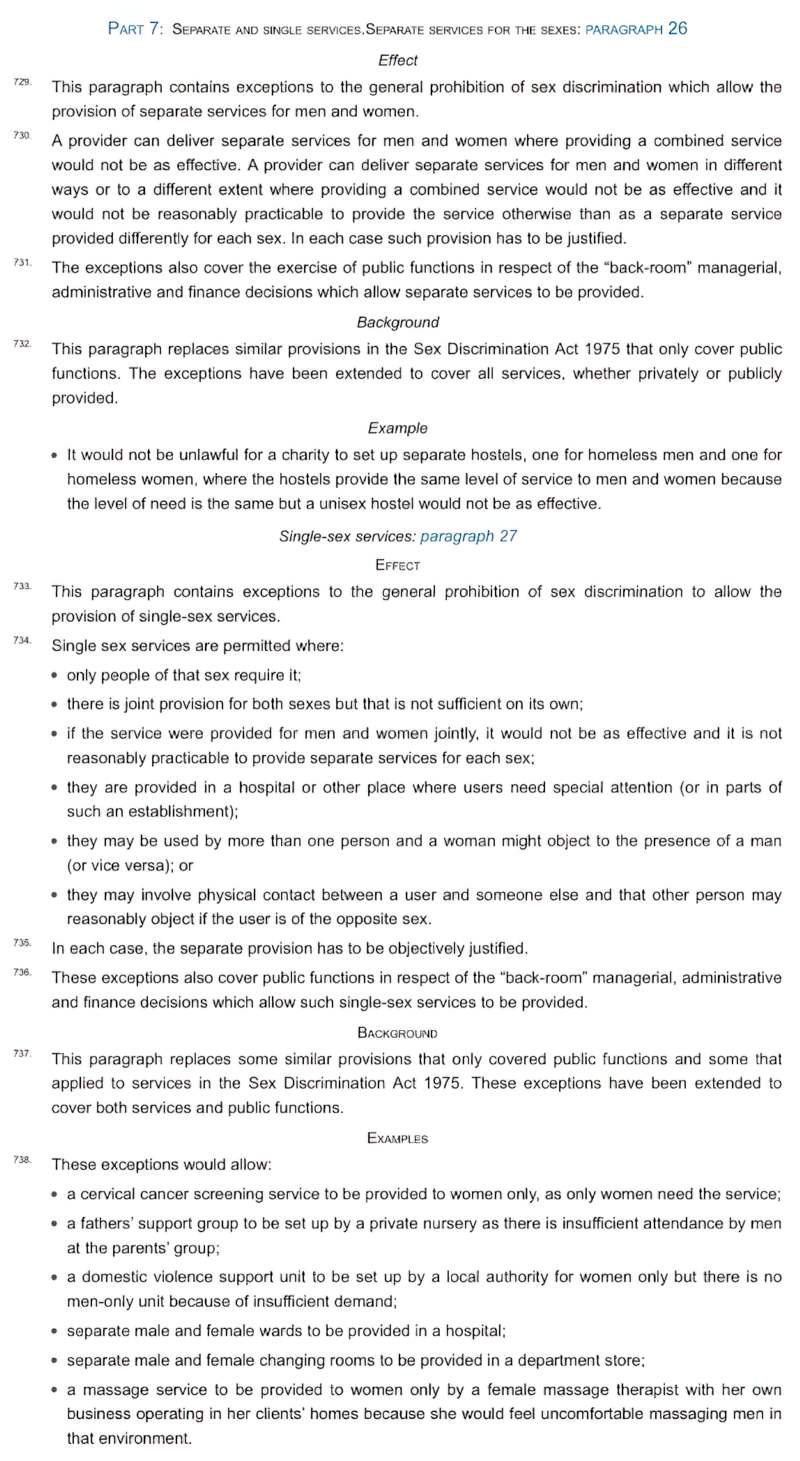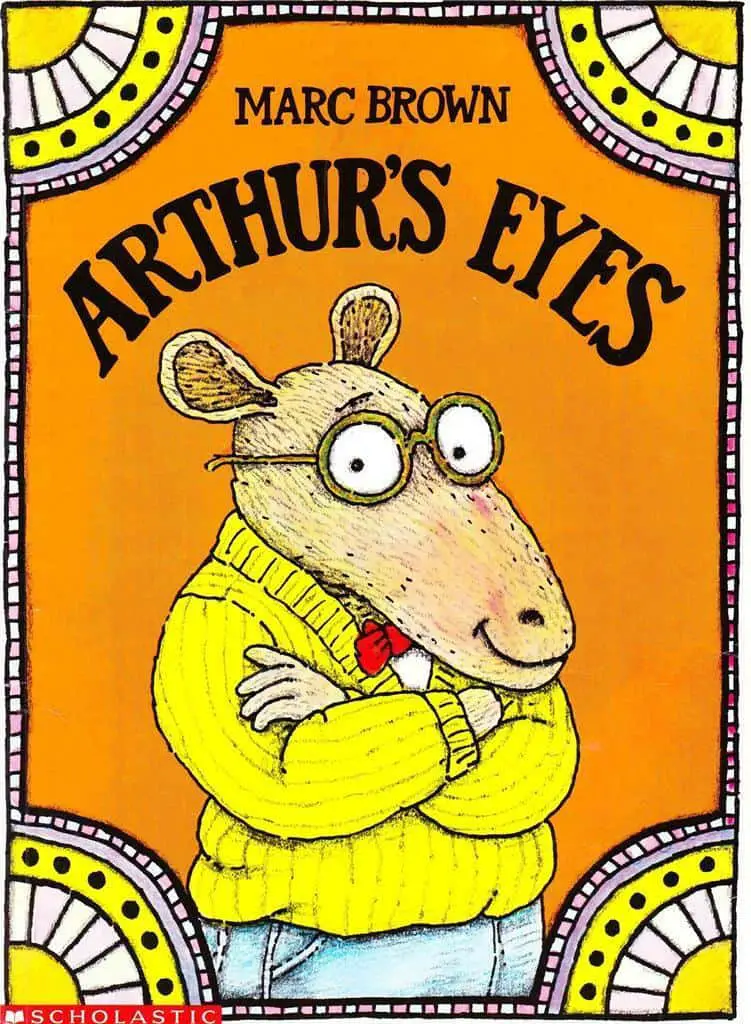Arthur’s Eyes (1979) by Marc Brown is an early story of the popular Arthur series, about an ambiguously animal creature (only after looking it up do I understand he’s a brown aardvark) who lives with his nuclear family in an American suburb. This is a well-crafted story and really speaks to its young audience. The book is now over 40 years old. Reading Arthur’s Eyes in 2020, I notice some ideological issues with the plot and characterisation that date the story badly.
SETTING OF ARTHUR’S EYES
- PERIOD — contemporary late 1970s, early 1980s
- DURATION — a week or so between realising there’s something up with his eyes, getting new glasses and learning to live with his new look
- LOCATION — an archetypal middle class American suburb, which is set in a fictional town called Elwood City. (It’s far more ‘town’ than ‘city’.)
- ARENA — Arthur’s home, school and shops (optometrist)
- MANMADE SPACES — cosy suburbia
- NATURAL SETTINGS — There is no trip out of the suburb in this story.
- WEATHER — Pleasant and unremarkable
- TECHNOLOGY CRUCIAL TO THIS PARTICULAR STORY — Glasses for short sightedness (a heavily catered for disability).
- LEVEL OF CONFLICT — Arthur doesn’t want to be different from his peers. If he gets glasses, he’ll be different and the kids will laugh at him.
- THE EMOTIONAL LANDSCAPE — Arthur wrongly thinks that being different is terrible, although he’s not proven wrong really, is he? He is mercilessly bullied. Also, by the end of the book his academic nemesis is wearing fashion frames for fun, which makes him feel better about himself, precisely because he’s not the only one wearing glasses. But what if you really are the only one who looks a certain way?
STORY STRUCTURE OF ARTHUR’S EYES
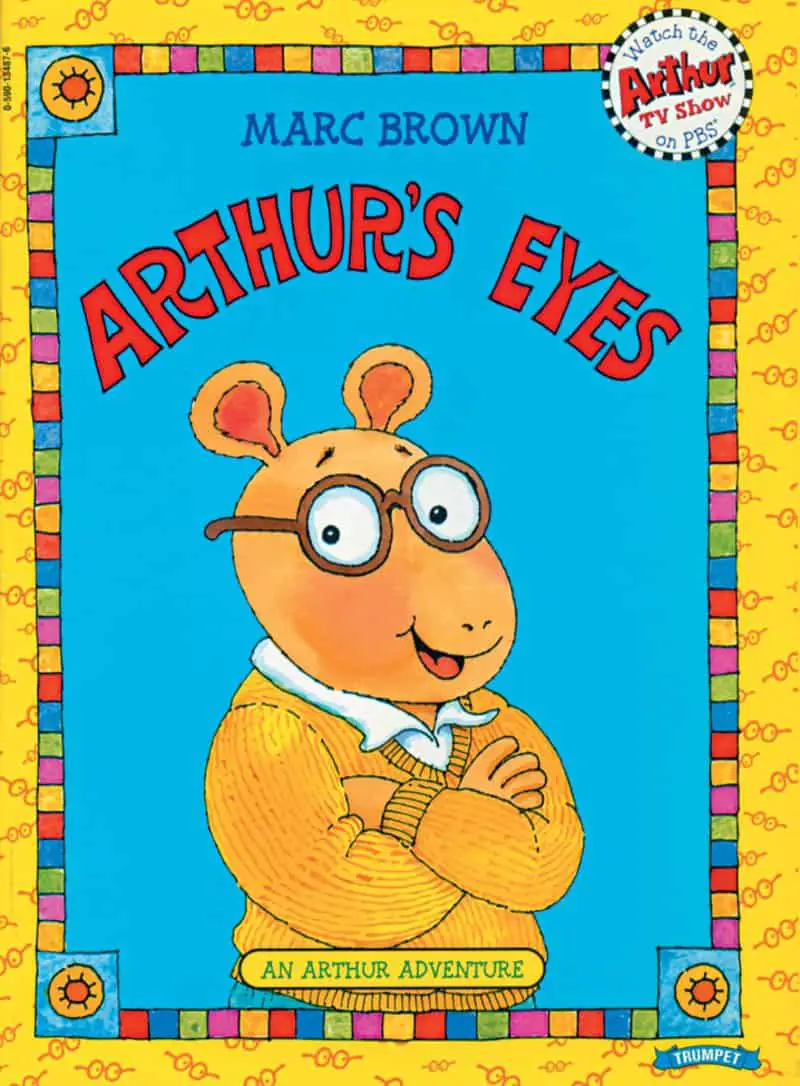
PARATEXT
None of Arthur’s friends wear glasses and his classmates tease him! But when he stops wearing them, he gets in all kinds of trouble. Maybe four eyes really are better than two.
MARKETING COPY
SHORTCOMING
Arthur can’t see well and this is affecting his ability to do his school work and play sport. He is also getting headaches from the eye strain. He doesn’t realise this about himself and internalises some of the shame directed his way. He is becoming a social outcast at his elementary school.
Note how much the character design of Arthur changed after the popularity of the TV series. The text below tells us ‘he looked fine’ but he looks really weird to me. He looks kind of like a moose without his antlers, or possibly a goat without horns.
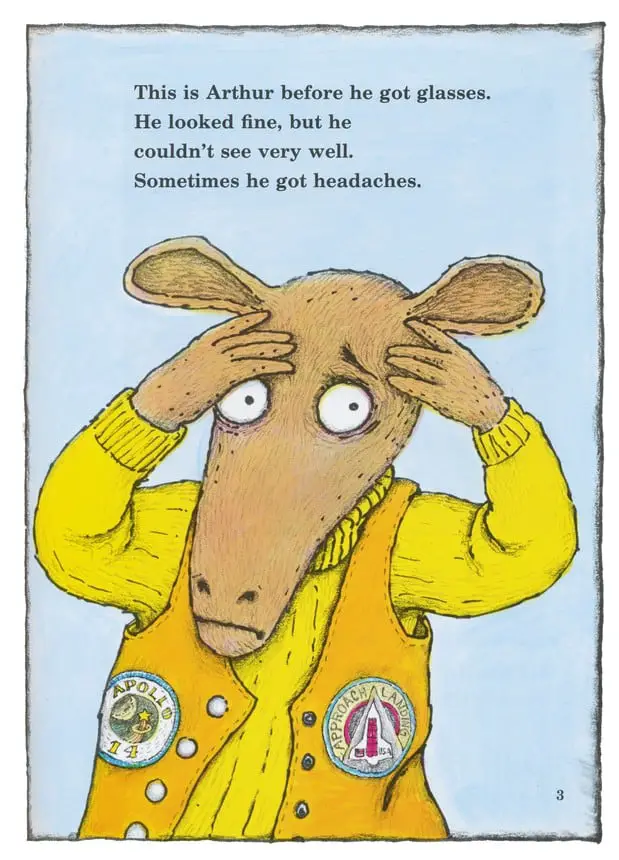
In 1976, Marc Brown wrote and illustrated a book called Arthur’s Nose, in which Arthur looks different again — and way more like an aadvark.
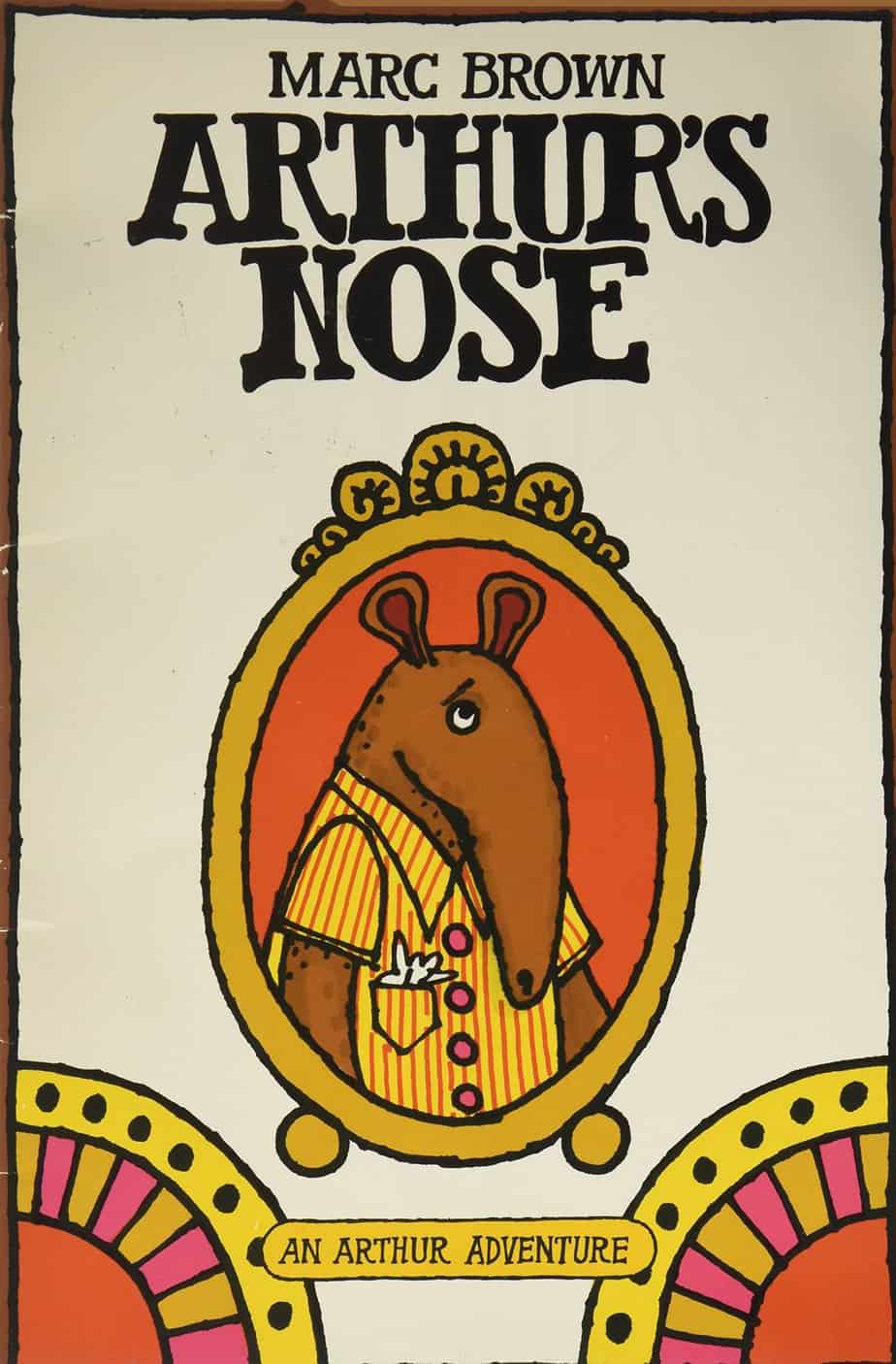
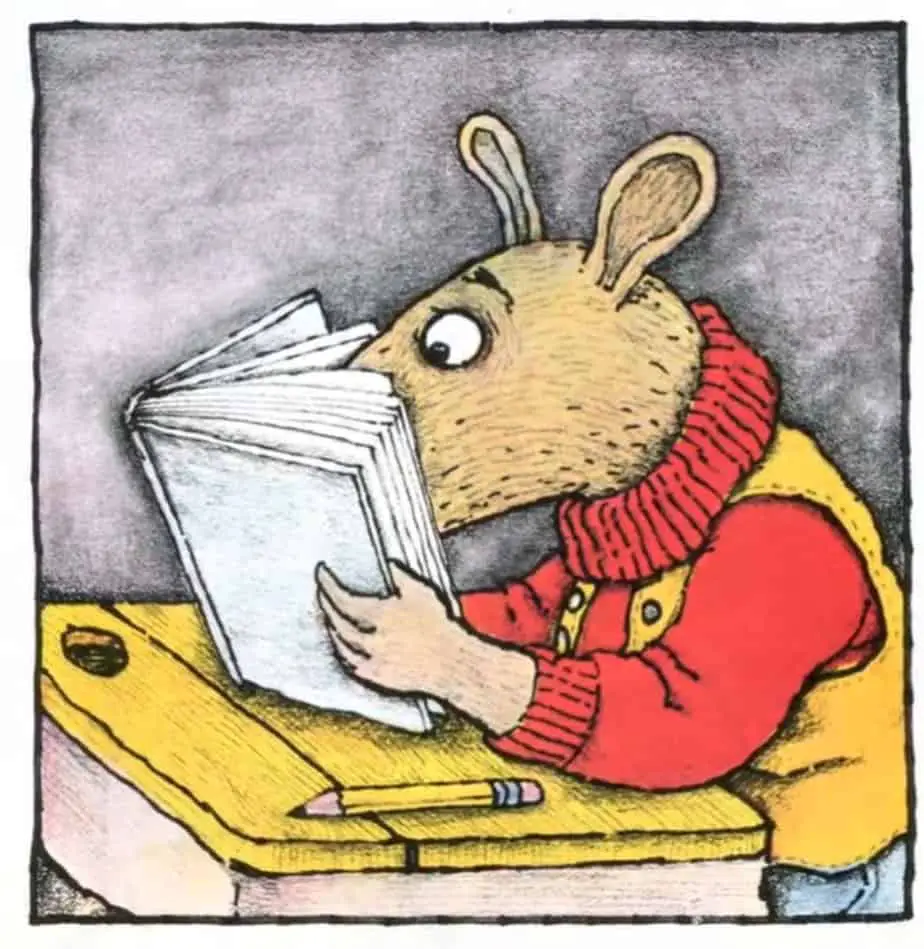
When a cartoon character changes significantly over time, TV Tropes calls this Art Evolution.
DESIRE
Arthur wants to be respected by his peers, and especially from the academically strong mean girl who the main boy character nonetheless needs to impress (a la Hermione Granger).
OPPONENT
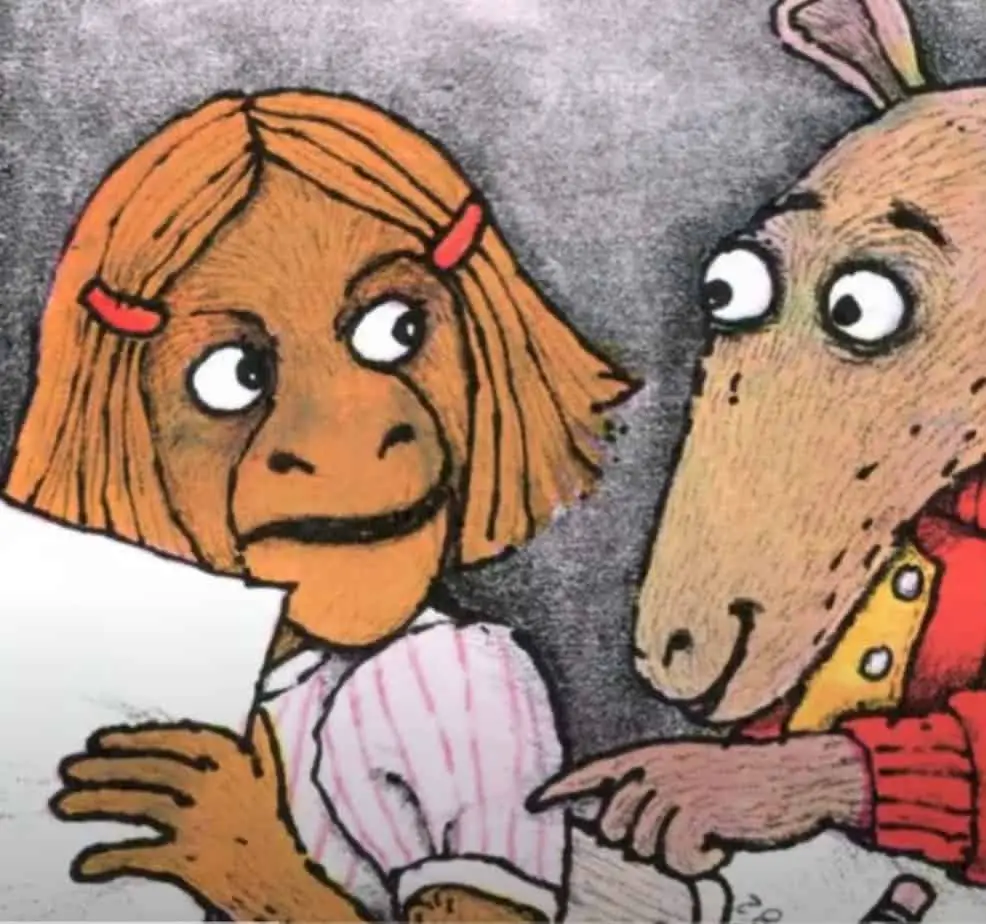
Francine got every problem right. Arthur didn’t.
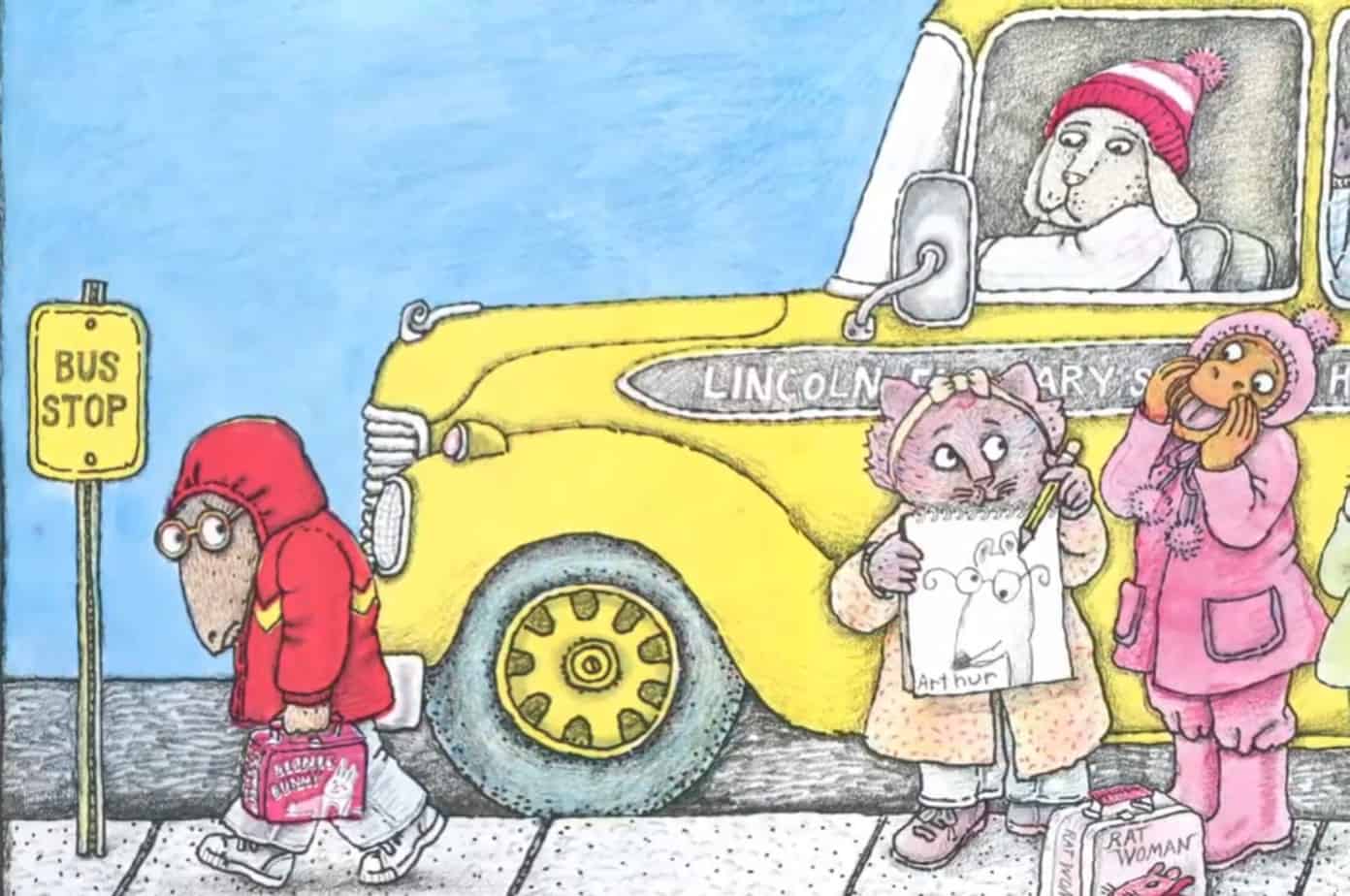
Francine called him four-eyes.
“Sissy!” shouted Buster.
PLAN
Arthur’s parents take him to the optometrist’s and he gets new glasses. If all were well with the world, everything would be fixed now.
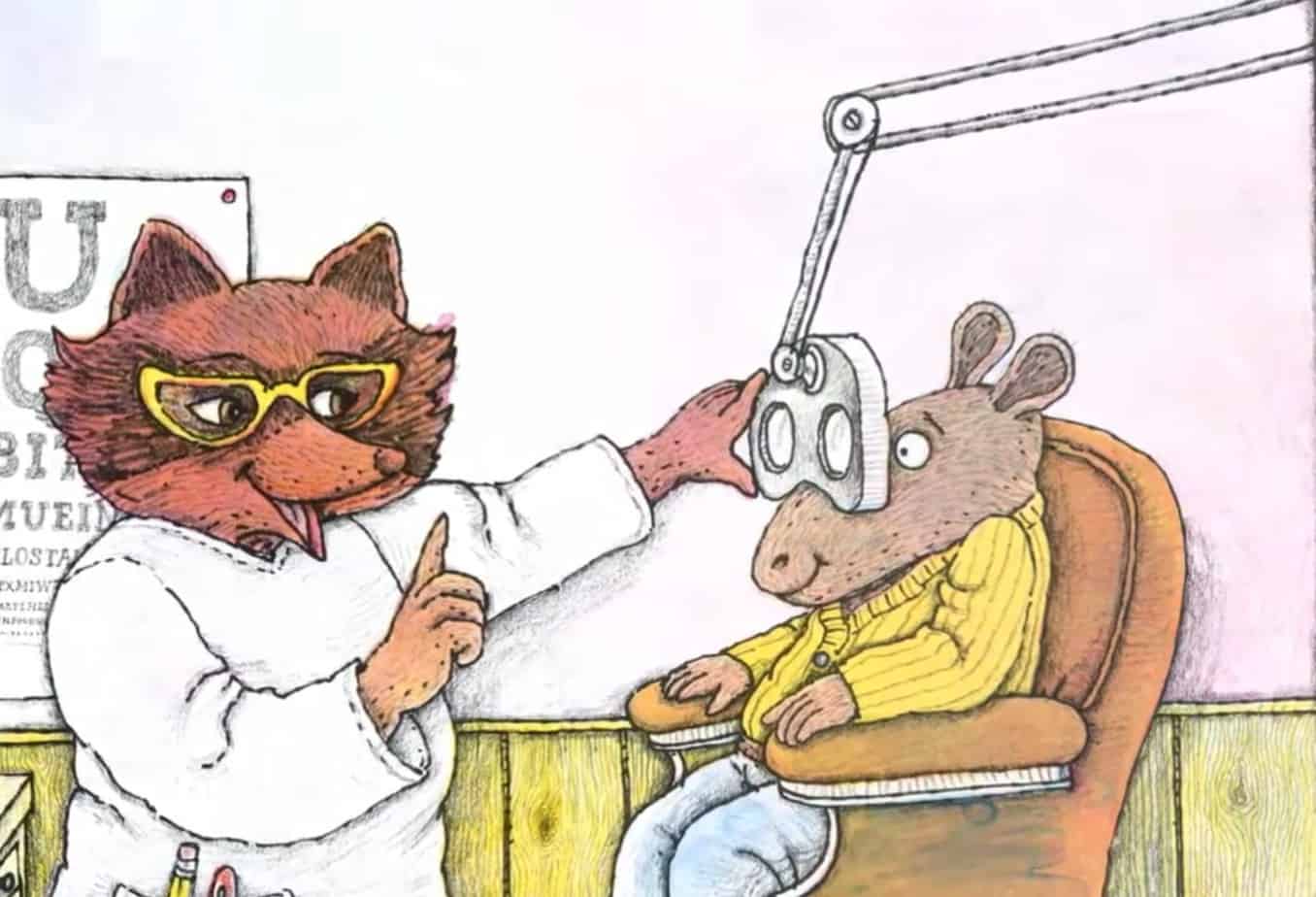
Arthur’s counterplan is to lose his glasses. He tries to put them through the laundry but they emerge unbroken.
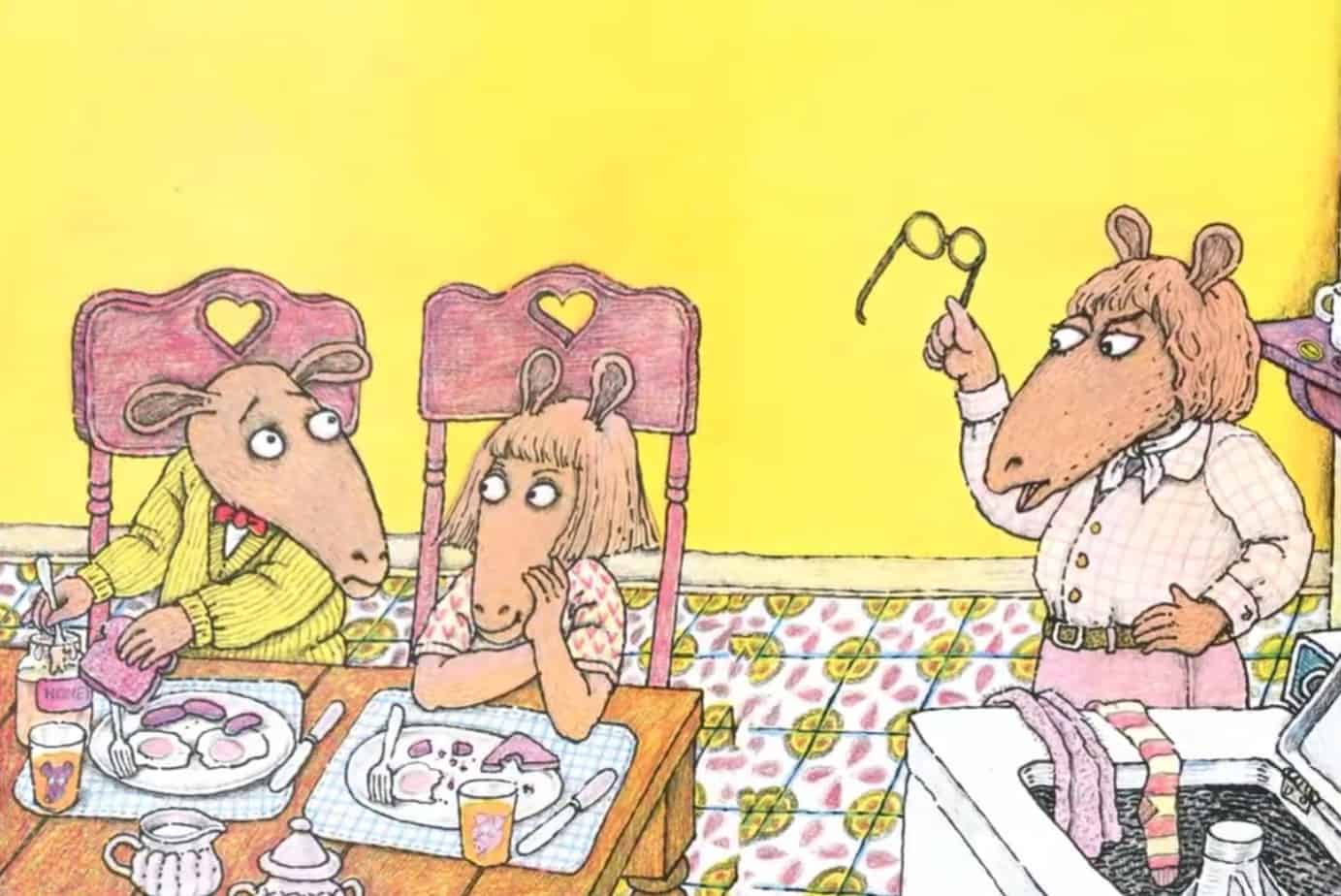
THE BIG STRUGGLE
Arthur’s peers call him ‘four eyes’ and Buster accuses him of being a girl, which for a boy is the worst thing one could possibly be.
Arthur is punished accordingly when he takes off his glasses, aiming to live without them. He accidentally walks into the girls’ bathroom at school.
I have never understood the big deal around bathrooms, in which the private business is done behind closed doors anyway. Once, at a work training day where attendees were unfamiliar with the layout of buildings, I was washing my hands in the women’s bathroom when one of the male attendees accidentally walked in. I’ve never seen anyone look so apologetic and embarrassed in my life. I thought it was funny and harmless, but this man continued to be embarrassed as the day wore on.
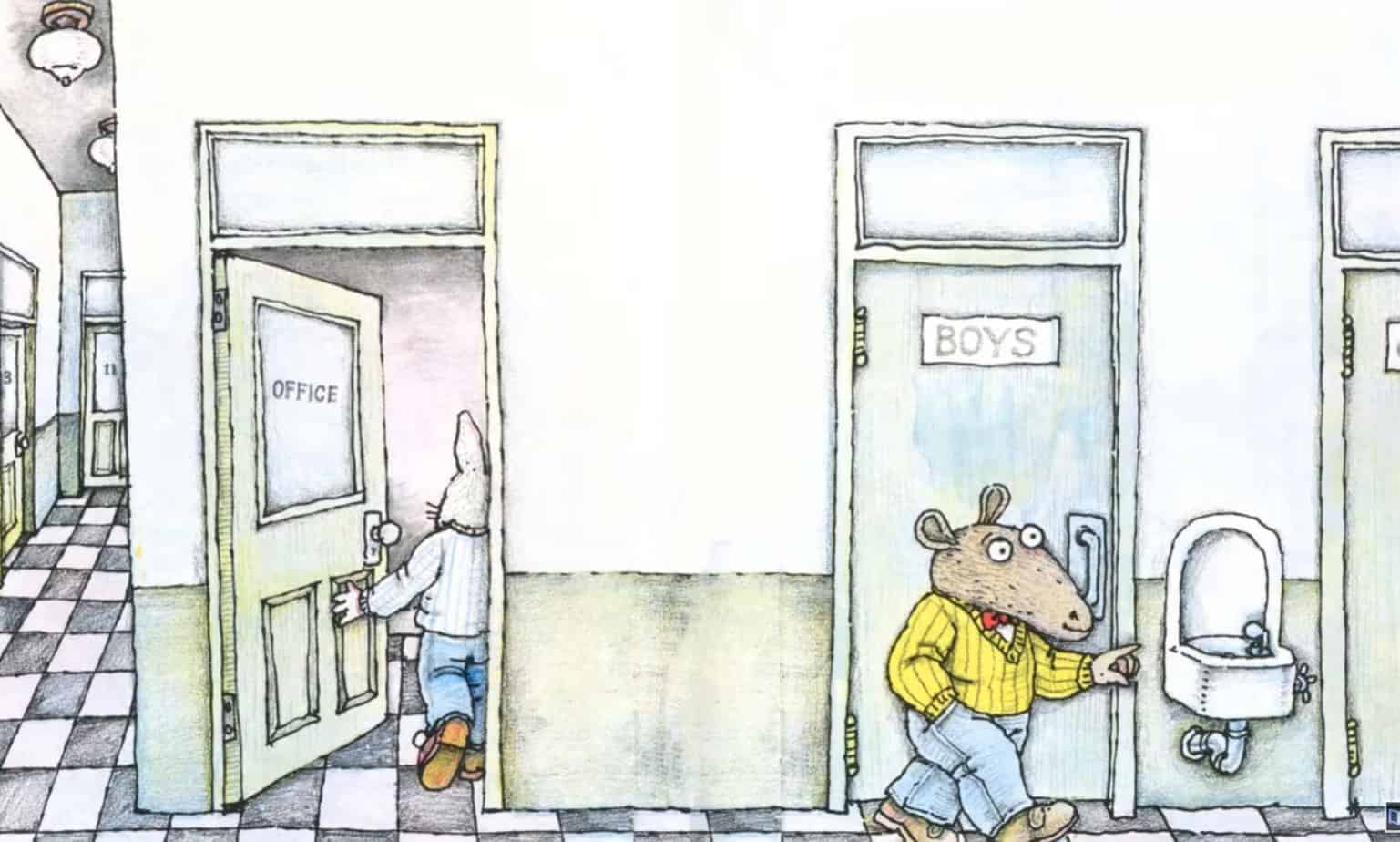
What do men expect goes on in women’s bathrooms? The communal area of a women’s bathroom is less exposing than the communal area of a men’s bathroom, which typically includes urinals. Women wash hands in this communal area, an activity shared by people of all sexes (we hope). I suppose occasionally women are putting on make up, but that is the most feminine activity I’ve seen take place in a dedicated women’s bathroom.
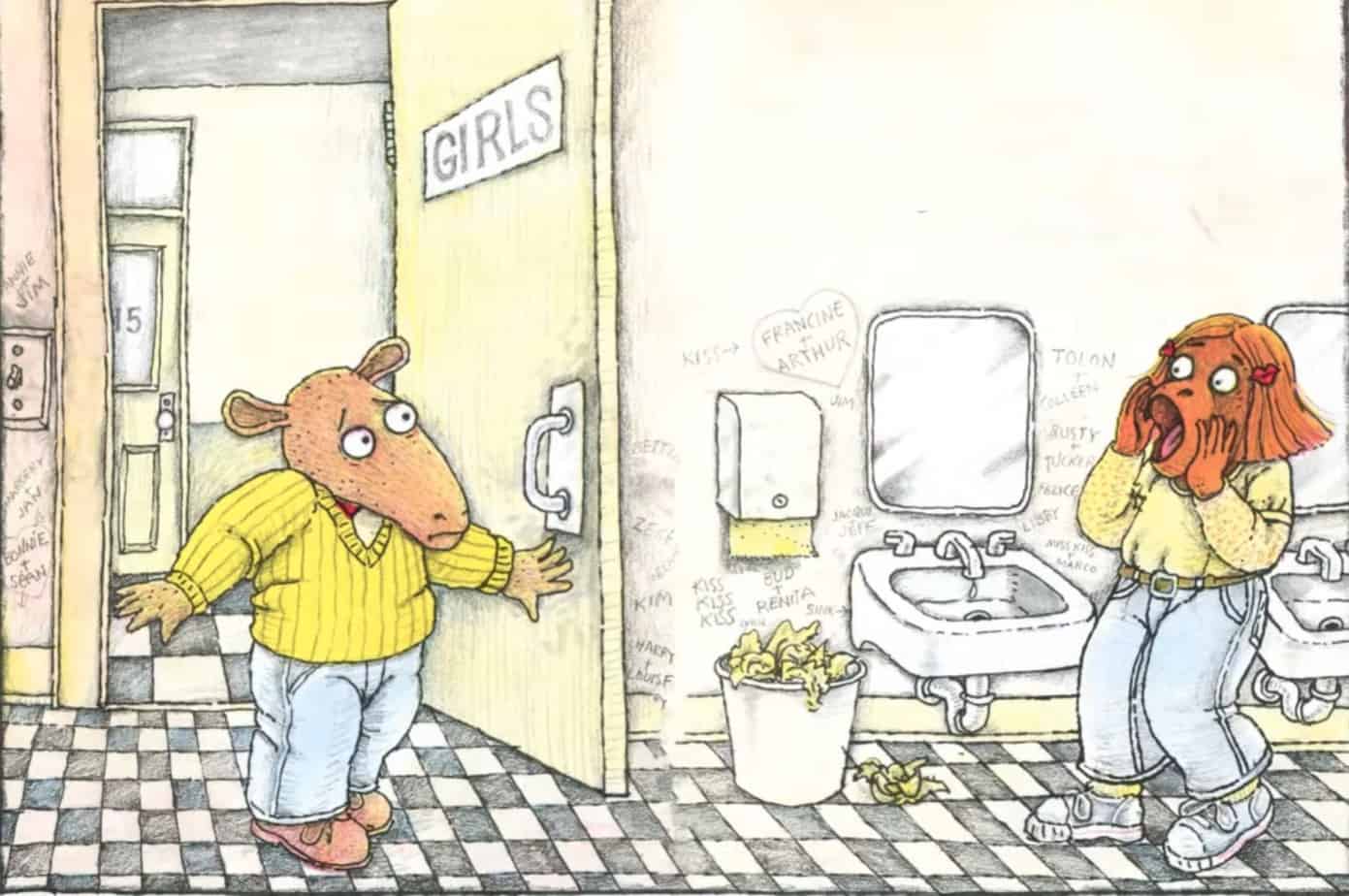
In Arthur’s Eyes, Arthur is shamed terribly for accidentally walking into the girls’ bathroom. There is such a fuss that the entire school shows up to see Arthur shamed. This bothers me deeply.
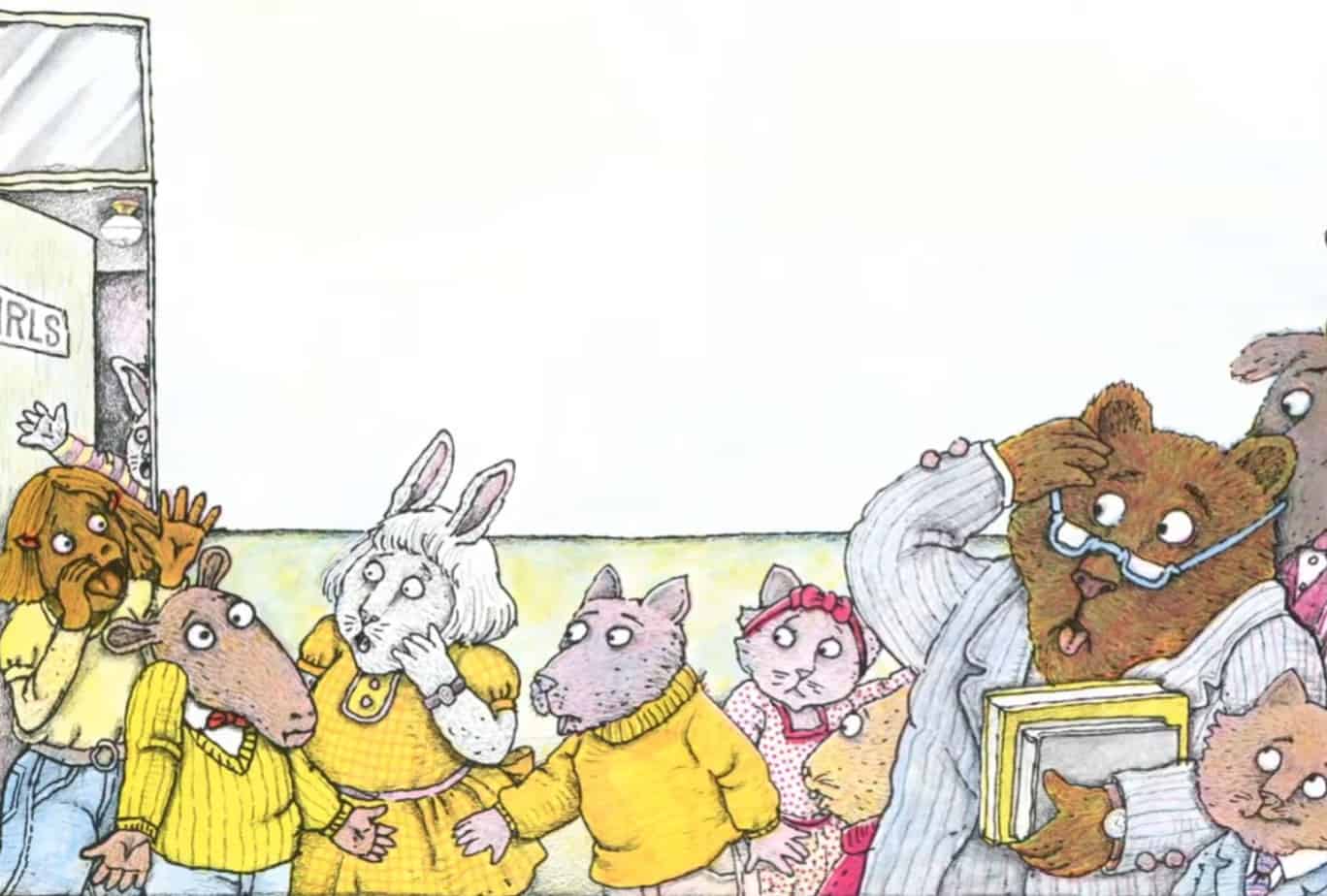
Stories reflect attitudes from the real world, but also reinforce them. This children’s story plays on a long-held idea that women must be protected from predatory men. Since trans women are frequently considered men (bolstered by the claptrap that comes out of Kathleen Stock and J.K. Rowling), this fear extends to trans women making use of female only spaces.
Bathrooms are scary places at the best of times, and various stories use the bathroom as horror venue, but this particular fear — of males entering female spaces — can be seen across all types of story, from this comic children’s book to Australian urban legend:
Avon Calling
A woman was at home alone one day, cleaning the house, when there was a knock at the door. She opened it to find a tall, large woman smiling on the doorstep.
‘Avon calling!’ the visitor said. Having been asked inside, the Avon Lady went through the rigmarole of explaining the properties of her products, but she didn’t make a sale.
Before leaving, the visitor asked to use the toilet, and the woman directed her down the hall. Minutes passed and still the Avon Lady hadn’t emerged from the toilet when the woman heard her calling out for more toilet paper. Having just topped up the toilet paper she immediately became suspicious and called the police. Terrified, she then locked herself in a cupboard. When the police arrived they ran into the bathroom and found a man waiting there, totally naked.
Great Australian Urban Myths by Graham Bell (1995)
Why would a violent man go to such trouble to trick and trap a poor, harmless woman in her own home? First, he doesn’t. Second, most violent men are harmful to their own partners.
Back to Arthur and the bathroom-gender panic.
Whichever bathroom a child uses at school should be a non issue. If reading this story to a young person today, this scene may be the opportunity to talk about how hard it is when you’re transgender, in which case there is most often no good bathroom option for you. If using the ‘wrong’ bathroom was such a huge deal for Arthur — one that actually leads to his self-revelation — then how much more difficult must it be for a trans kid, faced with the bathroom trauma every single day of their life?
ANAGNORISIS
Arthur realises that walking into the girls’ bathroom — and aligning himself with the girls (after being called a sissy) — is far more shameful than actually wearing the glasses.
Ugh.
It helps that a respected male teacher also wears glasses (for reading). I wonder if it’s significant that he is wearing a pink suit? Is he meant to be a femme dandy? I hope so, though pink wasn’t so strongly a marker of femininity back in 1979.
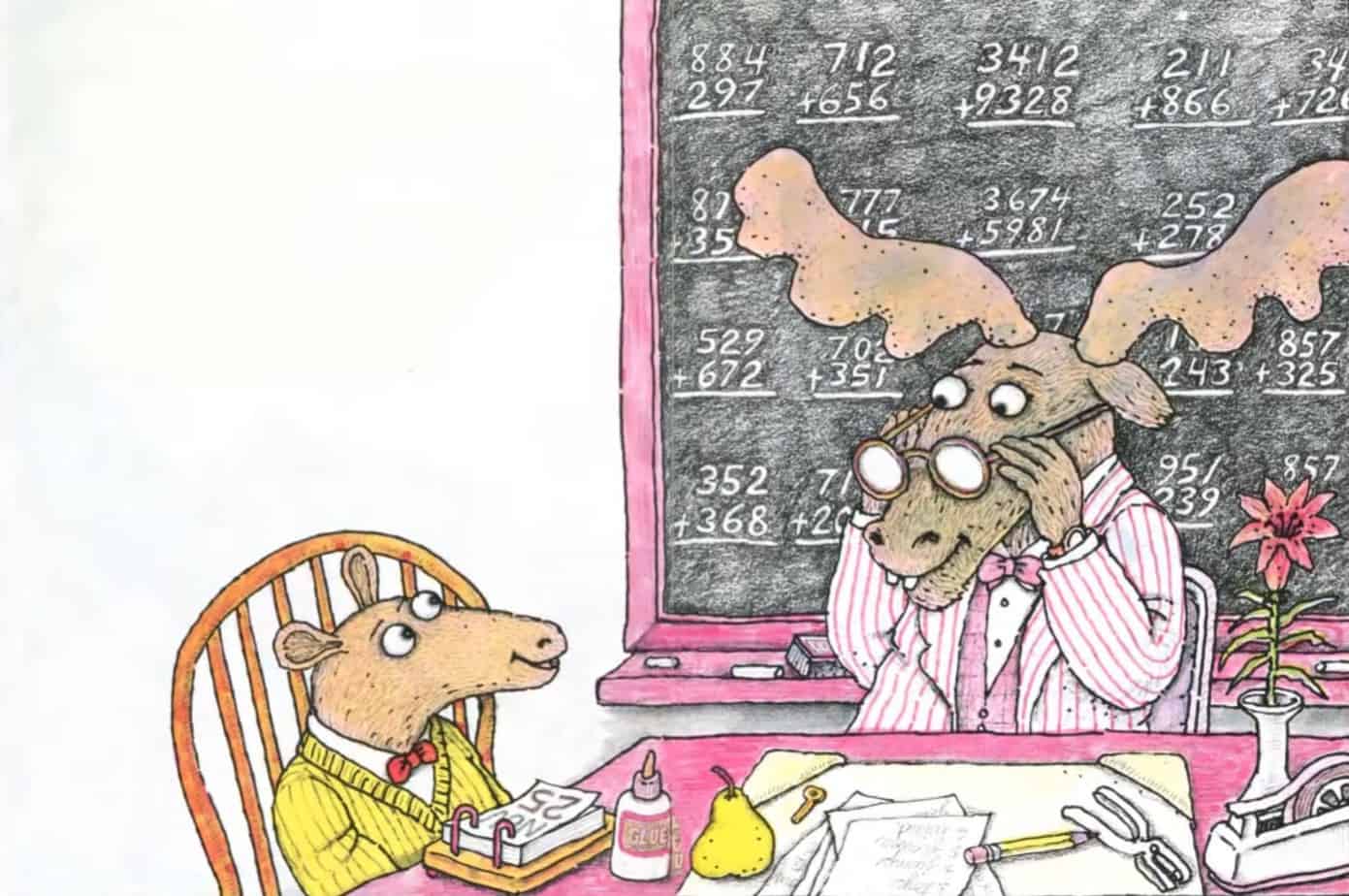
NEW SITUATION
Arthur wears his glasses full-time now. He feels better when Francine brings her fashion frames to school and wears them because they’re cool. He is no longer alone. Significantly, he has approval from Francine.
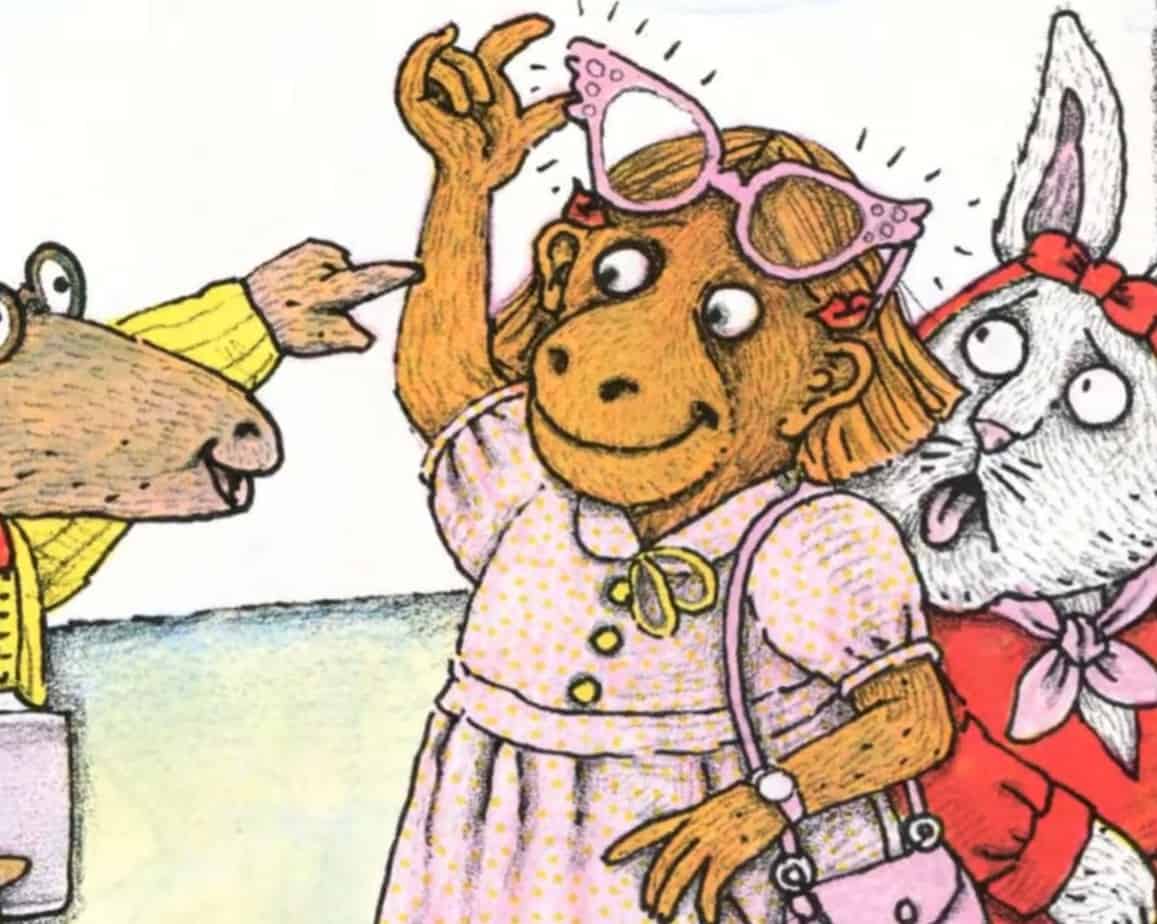
The story ends with a class photo, in which Francine wears her fashion frames. This still provides a fitting ending to the story.
EXTRAPOLATED ENDING
I’m reminded once again of that old quote that goes “Men are scared of women shaming them; women are scared of men killing them.” To be shamed by Francine is the worst shame of all, so only a positive action from Francine can make him feel 100% okay about his glasses.
Are the boys okay?
Clearly not. Boys are in this awful position whereby they crave approval from girls while at the same time going out of their way to avoid being mistaken for one.
RESONANCE
Fortunately times have changed. It’s difficult to imagine a modern day scenario in which a child is bullied mercilessly simply for having glasses. Children’s eyesight has changed (unfortunately), so a kid isn’t going to be the only one in their class wearing glasses. by 2050, myopia is projected to affect half of the world’s population. Some countries are further down that path than others — eyesight is still pretty good here in Australia, and it’s believed sunlight has something to do with it. A certain amount of sunlight into the eyes appears to be necessary for eye health during development.
In 1983, the typical onset of myopia was at around 11 years of age.
Good Vision For Life
There may even be a bit of prestige attached to glasses these days, similar to how braces and Invisalign have become a bit of a status symbol indicating wealth, whereas in earlier decades braces were considered the archetypal ‘marker of ugly’, alongside glasses. (‘Ugly’ girls morphed into beautiful swans once their glasses and braces came off.)
What about the longevity of Arthur’s Eyes?
The Arthur picture books proved so successful in America that they were made into a TV series. Below is the first episode, which hews pretty closely to the book. I do enjoy the addition of the framing device in which Arthur’s little sister mistakenly thinks a discovery in the basement, thinking that old photos of Arthur (without his glasses) are evidence of a missing older brother. When the framing story closes, the little sister makes the same error of her father, thinking that a younger version of their father is an entirely different person. This creates a circular feeling to the story.
Also well done in the TV episode: the jump cuts. For instance, when it’s time to take Arthur to the optometrist, a jump cut shows Arthur at the optometrists. There’s no discussion about it, no travelling there, we’re just there. This is a nicely paced story.
I also like that the writers of the TV episode have given Arthur some more imaginative ways in which he can lose his glasses.
GENDER AND BATHROOMS
There is no legal right to a bathroom or changeroom that is only shared with people whose bodies you consider to have the correct anatomical similarities to your own. when an anti-discrimination law allows the provision of single-sex services as it stipulates under exactly which conditions these are allowed, such law clarifies the rights of providers of such services.
